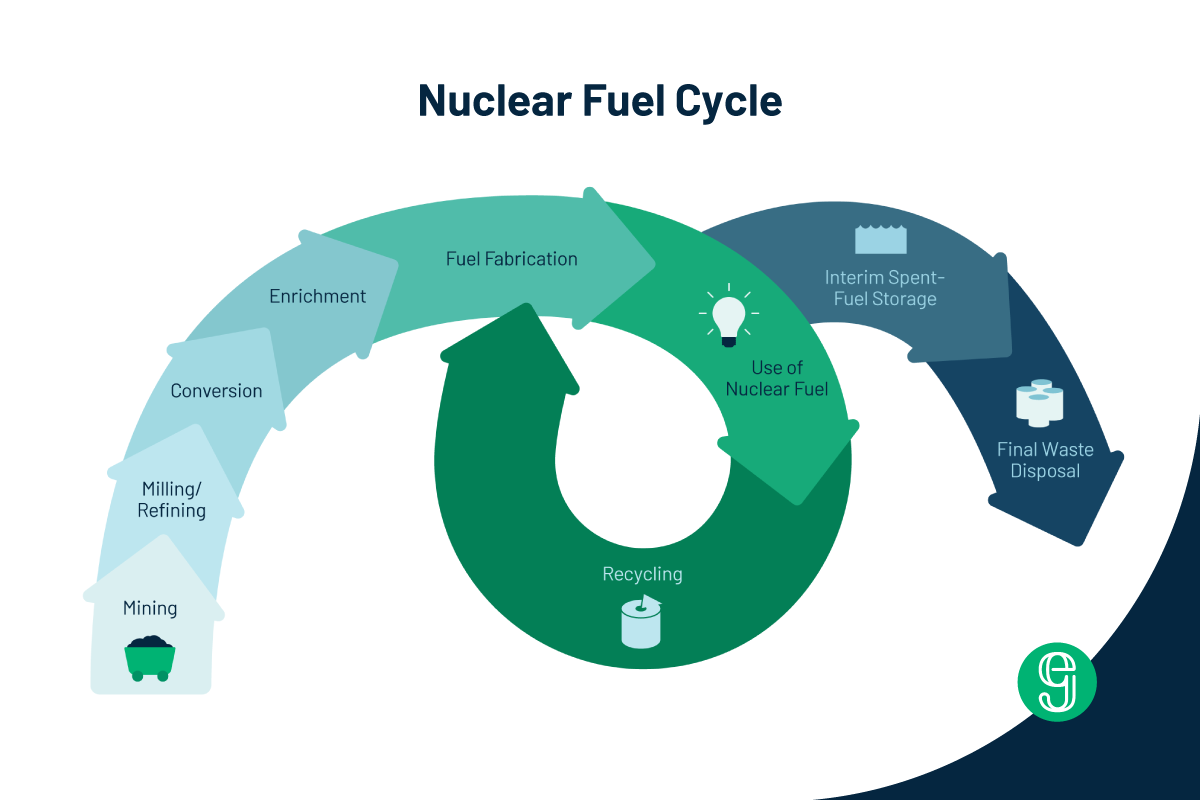Jessica and Jackie discuss their impressions of attending and the developments that arose from COP28.
.jpeg)
With the United Arab Emirates being the world’s sixth-largest oil exporter, we and other climate organizations were understandably wary of COP28’s location in Dubai this year. But in the last decade, the UAE actually witnessed one of the fastest build-outs of clean energy since COP started in 1992: 5.6 gigawatts of new nuclear power providing close to 25% of the country’s electricity.
The confluence of the UAE’s build-out of nuclear with a steadily growing global recognition that nuclear might be important for reducing emissions made for an exciting conference, even if the ultimate agreement to transition away from fossil fuels within the power sector isn’t the stretch goal we hoped for out of COP. A large, diverse, and international group of nuclear advocates attended.
A group of 22 countries1 announced a pledge to triple global nuclear capacity by 2050, including a set of commitments to expand collaboration and financing. U.S. Special Presidential Envoy for Climate John Kerry also announced a new strategy of commercializing fusion technology, which included 35 countries to collaborate on research and development and supply chain. A group of countries colloquially known as the Sapporo 5 ( the G7 minus Germany and Italy) announced an almost $5 billion investment in diversifying the nuclear fuel supply away from Russia.
This is not only a change of direction for COP, but also notably for U.S. Special Presidential Envoy for Climate John Kerry. In 1994, then-Senator Kerry led the Democrats in a campaign to eliminate funding for advanced nuclear research. This was just one year before the first COP and the signing of the Kyoto Protocol, where countries committed for the first time to reductions in Greenhouse Gases. Now, almost 30 years later, John Kerry has said at multiple convenings that nuclear is necessary to reduce the burning of fossil fuels.
At COP, nuclear was still siloed away from other low-carbon energy sources in many ways. Many country pavilions — like Sweden — in the Blue Zone didn’t mention nuclear, even though they rely heavily on it for electricity generation. The Ukrainian pavilion had a very moving exhibit on the environmental impacts of the war, especially the flooding from the collapse of the Kakhovka Dam. But I also met an activist there who was advocating for a nuclear phase-out in Ukraine (where nuclear contributes 40% of electricity).
Ultimately, over 200 countries agreed to transition away from fossil fuels and reach net-zero by 2050, the first time such a solid commitment has been made at COP. This achievement, combined with the recognition of the critical role that nuclear can play in deep decarbonization left us feeling hopeful and inspired after attending COP.
Endnotes
1) United States, Armenia, Bulgaria, Canada, Croatia, Czech Republic, Finland, France, Ghana, Hungary, Jamaica, Japan, Republic of Korea, Moldova, Mongolia, Morocco, Netherlands, Poland, Romania, Slovakia, Slovenia, Sweden, Ukraine, United Arab Emirates, and United Kingdom















































.png)























.png)






%252520(1200%252520%2525C3%252597%252520800%252520px).png)







